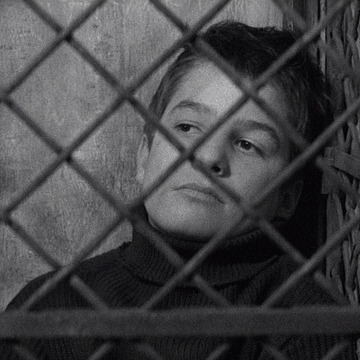Update: See my discussion of Harryhausen movies showing on TCM August through October 2011 here.
Ray Harryhausen is a special effects artist who created some of the most compelling stop-motion animation in fantasy and adventure films of the 1960s and 1970s. He got his start working with Willis O’Brien, who pioneered the use of this kind of stop-motion animation in live action films in his work on the classic 1933 King Kong.
During the 1950s, Harryhausen developed his craft on some of the science fiction monster movies of that decade, including two favorites of mine: The Beast from 20,000 Fathoms (1953) and It Came from Beneath the Sea (1955). In Beast, an atomic bomb test thaws out a giant dinosaur who proceeds to attack New York City. (Why is it that these monsters never attack Montreal, say, or Bar Harbor, Maine?)
Beast came out a year before Godzilla and isn’t given enough credit for more or less initiating the whole contemporary cycle of “giant monster attacks” movies, of which Godzilla is the most famous exemplar. King Kong is of course the ur-instance of this genre, but Beast and Godzilla share the focus on the atomic bomb as their cause.
A-bomb anxiety movies are an important genre for films during the 1950s, a genre that includes such other memorable drive-in/Creature Features flicks asThem!, with its giant ants, but is not limited to monster movies—On the Beach (1959), starring Gregory Peck and directed by Stanley Kramer, also fits in this genre. And many movies from the period feature the anxiety around atomic weapons and nuclear power in the form of a more generalized anxiety about scientists unleashing new horrors on the world. In this way, it can be argued, a-bomb anxiety plays a role in another of Harryhausen’s monster movies from this era, It Came from Beneath the Sea—in which, finally, a city other than New York or Tokyo gets stomped. Though sadly it’s my home town of San Francisco that gets it (be careful what you wish for). The stomper this time is a giant octopus, which is discovered—and by extension “unleashed”—by a nuclear sub in the opening of the film.
Harryhausen made other good science fiction movies during the 1950s, but it was his fantasy/adventure film, The 7th Voyage of Sinbad (1958), that really solidified his reputation and led directly to the most successful Harryhausen films—including the two that are showing tomorrow afternoon (Nov. 16) on TCM: Jason And The Argonauts (1963) at 1pm PT, followed at 3pm by the last of the Sinbad movies, Sinbad And The Eye Of The Tiger (1977).
The best of Harryhausen’s Sinbad movies—and perhaps the best movie he ever did—The Golden Voyage of Sinbad (1977), will be showing on TCM in two weeks, Saturday, Nov. 27 at 3pm.
Harryhausen’s last feature film was the original Clash of the Titans (1981)—see it instead of the more recent remake.
For more…
- Ray Harryhausen – Wikipedia, the free encyclopedia
- Ray Harryhausen – IMDb.com
- The Fantastic Films of Ray Harryhausen – Legendary Monster Series (Jason and the Argonauts / The Seventh Voyage of Sinbad / The Golden Voyage of Sinbad / Sinbad and the Eye of the Tiger / The 3 Worlds of Gulliver) – Amazon.com
- The Fantastic Films of Ray Harryhausen – Legendary Science Fiction Series (It Came from Beneath the Sea / Earth vs. the Flying Saucers / 20 Million Miles to Earth / Mysterious Island / H.G. Wells’ First Men in the Moon) – Amazon.com
- The Sinbad Collection (7th Voyage / Golden Voyage / Eye of the Tiger) – Amazon.com
- TCM Greatest Classic Films Collection: Sci-Fi Adventures (Them! / The Beast from 20,000 Fathoms / World Without End / Satellite in the Sky) – Amazon.com
- Willis O’Brien – Wikipedia, the free encyclopedia
- The Beast from 20,000 Fathoms – Wikipedia, the free encyclopedia
- It Came from Beneath the Sea – Wikipedia, the free encyclopedia
- The 7th Voyage of Sinbad – Wikipedia, the free encyclopedia
- Undead Backbrain » Blog Archive » New Daikaiju Appears Through a Fog of Obscurity—some interesting info on Beast and general points about “giant monster” films (daikaiju eiga).
- Horror Movie Top Ten List #2: Giant Monster Movies « Unfiltered Smoke
- MONSTER BRAINS: Ray Harryhausen – The Golden Voyage Of Sinbad – lots of pics
- Happy Birthday, Ray Harryhausen! « Spectacular Attractions – more pics
- ray harryhausen « FORGOTTEN SILVER – info and discussion of many of Harryhausen’s movies (in French)
Filed under: Movies, adventure, Classic Films, fantasy, Film, science fiction, TCM







